17 Days Best Uganda Birding and Wildlife Safari
Description
17 Days Best Uganda Birding and Wildlife Safari is about two – three weeks with a keen and a trained professional birding guide from Journeys Uganda in the different and diverse ecosystems, packed into this small country Uganda is incomparable to any birding destination in the whole world.
On this 17 days best Uganda Birding and Wildlife Safari given luck, a good timing, weather and openness of the birding group, we expect to offer you the best of your birding time on this planet. The birding destinations featured have it all, from the enormous habitats of Murchison Falls National Park where we get northern African species both waders and passerines, to the southern amazing forests of Budongo to search for the skulking Puvel’s Illadopsis that can only be found here in Central East Africa, to the Royal Mile a place birders refer to as the best for forest birding with numerous west African rarities ascending further into the Kibale Forest for Chimpanzee tracking and finding the shy Green-breasted Pitta and later exploring the Semliki Valley National park, mostly known for the rare Guinea-Congo biome endemics with the biggest list of shy Hornbills and cooling it down with the savannah and water birds in Queen Elizabeth, the gem of the world.
We have featured the Mountain gorillas on this best Uganda birding and Wildlife Safari which are found in Bwindi Impenetrable Forest National Park as have and paradise for birding as well since all the Albertine Rift Endemics on our safari will be found here and the most highly sought after is the African-green Broadbill and the Grauer’s Swamp Warbler, our commitment to you here is to ensure these will be pocketed and off your birding wishlist, just trust and give our guide the time.
This 17 days best Uganda birding and Wildlife Safari will now lead us into Lake Mburo National Park the most accessible and easy to explore compared to others, very special and as birders we call it the Barbet Haven since it has many north Tanzania special like the Red-faced, Crested and Black-collared Barbets with the best chances of seeing the African Finfoot in the whole world. The magic of this 17 days safari is almost happening at the end as we visit the Mabamba bay for the most sought after Shoebill Stork, a dream every birder to Africa wants to fulfil, this is one of the most reliable place in Uganda for finding this bird and finally the Mabira forest, a remaining jewel for the birds around the cities of JInja, Lugazi and Kampala, come see for yourself on this safari and we create a birding journey for your lifetime memories!!
Trip Summary
- Day 1: Arrival And Birding The Entebbe Environs.
- Day 2: Birding To Murchison Falls National Park
- Day 3: Birding Murchison Falls
- Day 4: Birding To The Southern Sector Of Murchison Falls National Park
- Day 5: Birding Budongo- Royal Mile And Busingiro
- Day 6: Birding To Kibale Forest National Park
- Day 7: Kibale National Park – Chimp Tracking And Birding
- Day 8: Birding To Semliki Valley National Park
- Day 9: Birding From Semliki National Birding To Queen Elizabeth National Park
- Day 10: Whole Day Birding Queen Elizabeth National Park
- Day 11: Queen Elizabeth To Bwindi Impenetrable National Park
- Days 12 And 13: Gorilla Tracking And Birding In Bwindi
- Day 14: Birding From Bwindi To Lake Mburo National Park
- Day 15: Birding Lake Mburo National Park To Kampala
- Day 16: Birding Kampala- Mabamba Islands
- Day 17: Birding To Mabira And Then Transfer To Entebbe Onward

Day 1: Arrival And Birding The Entebbe Environs.
Our arrival is at Entebbe International Airport followed by a transfer to the Lodge. Depending on the arrival time, we can have optional birding in Entebbe, especially on the lush grounds of the Entebbe Botanical Gardens, where we’ll see both forest and lakeshore birds. Our first birds could include Palm-nut Vulture, Great Blue Turaco, Eastern Grey Plantain-eater, African Pied Hornbill, Splendid Glossy Starling, Orange and Slender-billed Weaver, Golden Backed, and many more. Keep eyes open in the evening for the Bat Hawk around this place Look out for the Bare faced-go away bird, Great Blue and Ross’s Turacos, Red Chested, Klaas’s and Diederik Cuckoo, Great Reed and Sedge Warbler, Fain-tailed Widow bird, Striped, Malachite, Giant, Woodland and Pygmy Kingfishers, Black Bishop, Grey Woodpecker, Olive, Olive bellied, Red chested, superb, Copper, Green Throated Sunbirds and many more.
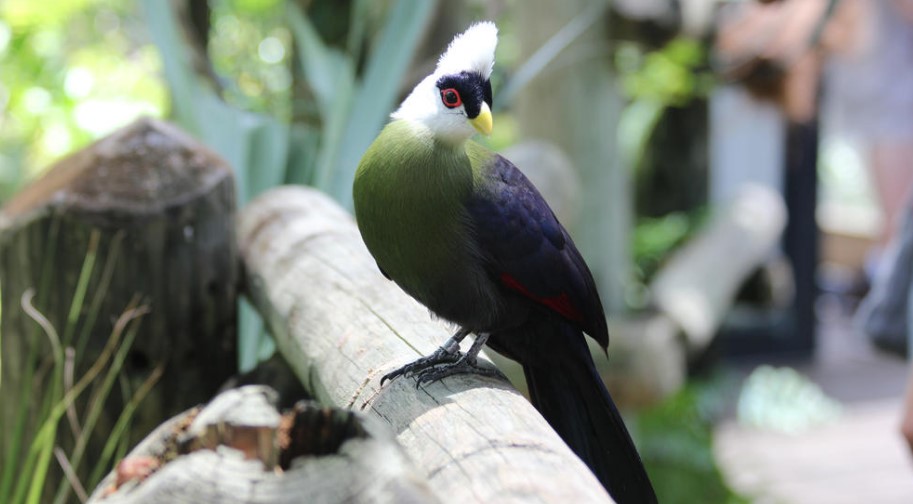
Day 2: Birding To Murchison Falls National Park
After breakfast in the morning we transfer to Masindi where we shall have our lunch via the Luwero triangle passing through undulating grasslands and mosaic woodland where we drive watching out for the White-crested Turaco, Bronze-tailed Starling, lesser Blue and Greater Blue Eared Starlings, Yellow Mantled Widowbird, Black, and Black Winged Bishops, White Headed Barbet, Cardinal and Nubian Woodpecker, Lesser and Greater Honeyguide. Dinner and overnight at Sambiya River Lodge or Equivalent.

Day 3: Birding Murchison Falls
A highlight of the visit will undoubtedly be the boat trips to the bottom of the falls and to the delta area if time allows, and of course the one bird that will be on everyone’s mind is the Shoebill while at the delta. Superb views and photography moments can be had of this wonderful bird. There will be other birds including the Red-throated and Northern Carmine Bee-eater mammals such as Rothschild’s Giraffe, Cape Buffalo, Elephant, Waterbuck and many others will be viewed. Other birds to look out for include the Saddle-billed, Yellow Billed and African Open Billed Stork, Heuglin’s Falcon, Senegal Thick-knee, Rock Pratincole, Giant, Woodland, Grey Headed, Malachite, Pygmy and Striped Kingfishers. On the game drive we look out for Black Billed Barbet, Northern and Red Faced Barbet, Swallow-tailed, Blue-breasted and Northern Carmine Bee-eater, lately there have been sightings of the Southern Carmine Bee-eater and Dickinson’s Kestrel, Abyssinian Rollers, the giant Abyssinian Ground Hornbills, Black Winged and Northern Red Bishops. The Patas Monkey will be the primate to look out for on this day. Dinner and overnight at Sambiya Lodge. A night drive today is very advisable looking out for nocturnal mammals and birds.
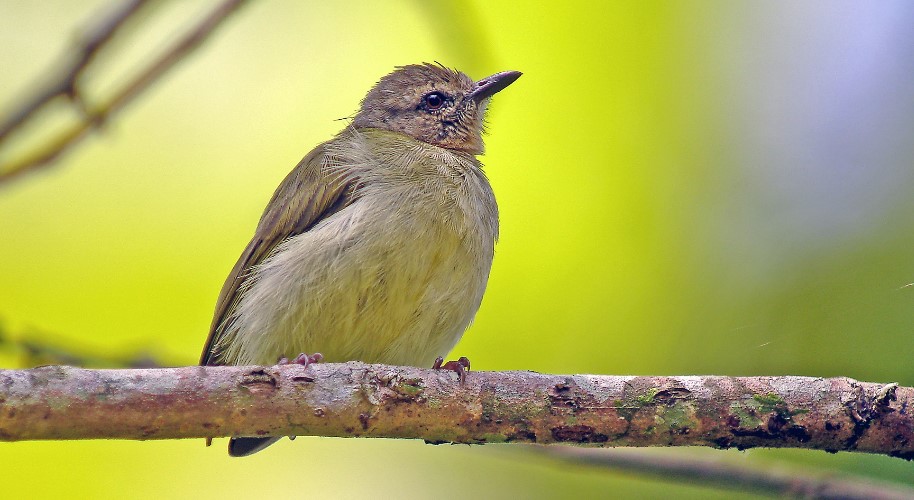
Day 4: Birding To The Southern Sector Of Murchison Falls National Park
Early this morning, we will head back south the short distance to the famous Budongo Forest. Our efforts will be concentrated on the Kaniyo Pabidi area in the southern sector of the Murchison Falls National Park and the only known site in East Africa for Puvel’s Illadopsis. We can expect to find this bird as well as a wide range of other forest rarities. We will have much of the day to try and find a good mix of widespread species and more local specialties such as Crested Guineafowl sporting their ‘punk hairdos’, Rufous-crowned Eremomela, Yellow and Grey Longbills, Lemon-bellied Crombec, Yellow-browed Camaroptera, Little Green Sunbird and Red-headed Bluebill, among others. There are also many other special birds with a West African origin such as White-thighed Hornbill, Green-breasted Pitta, Rufous-sided Broadbill, Blue-breasted, Dwarf and Chocolate-backed Kingfishers, Yellow-crested and Brown-eared Woodpeckers, Yellowbill, Western Black-headed Oriole, Yellow-spotted, Hairy-breasted and Yellow-billed Barbets, Green Hylia, Buff-throated, Black-throated and Black-capped Apalis, Chestnut-capped Flycatcher, the elusive Lemon-bellied Crombec, Red-headed Malimbe and various forest starlings. We will also be in major area for a wide range of primates such as Blue and Red-tailed Monkeys, Black and White Colobus and, if lucky, Chimpanzees (this area is home to Uganda’s largest population of Chimpanzees). Dinner and overnight stay at Masindi Hote.
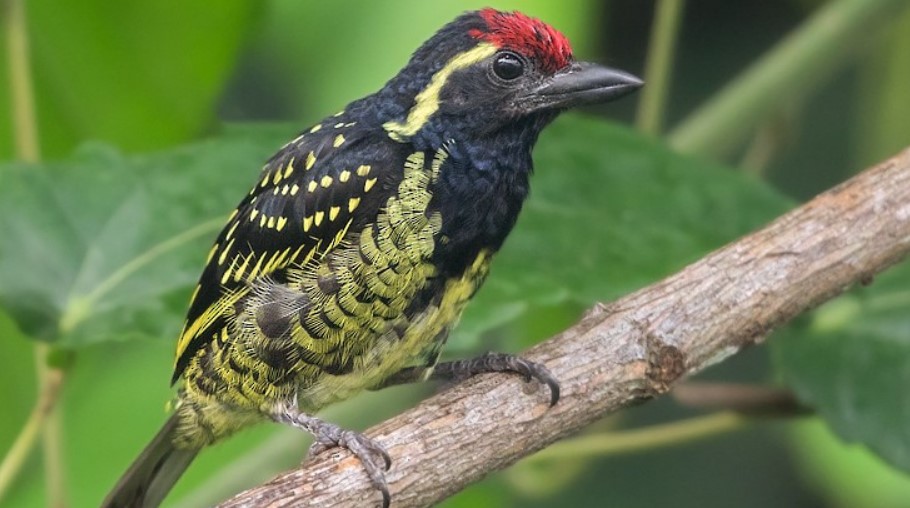
Day 5: Birding Budongo- Royal Mile And Busingiro
Depart early for the nearby Budongo Forest, birding along the Royal Mile, a truly spectacular road with forest canopy towering far overhead. There is a good system of trails in the forest, today we expect skulking birds like the Nahan’s Francolin, excessively noisy White-thighed Hornbill, graceful Cassin’s and Sabine’s Spinetail, Blue-throated Roller, Yellow-browed Camaroptera, Forest Flycatcher, Chestnut-capped Flycatcher, Ituri Batis, Lemon Bellied Crombec, Tit-Hylia, Uganda Woodland Warbler, Forest Robin, Yellow Billed, Grey Throated, Hairy Breasted and Yellow Spotted Barbet, Great Blue and Black Billed Turaco, Dusy Long Tailed Cuckoo, Spotted, Plain, Slender Billed, White Throated, Little Grey and Little Greenbul, Red Tailed Bristlebill and Black-capped Apalis among others. Lookout for the Blue, Red Tailed and the black and white Colobus monkey. On lucky days the chimps cross the trail. Dinner and overnight stay at Masindi Hotel. FB

Day 6: Birding To Kibale Forest National Park
The drive today is long, we shall only have a few birding stops, we drive via Hoima there are a few papyrus swamps where specialties such as White-winged Warbler and Papyrus Gonolek can be found, while the surrounding scrub may harbour, Double-toothed Barbet, Black-bellied Seed cracker and Grey-headed Oliveback. As we approach Fortportal, we shall have a birding stop to lookout for special species like the Dusky and Olive Long-tailed Cuckoo, Waller’s, Narrow Tailed and Stuhlmann’s, Starling, African Black Duck, Cassin’s Flycatcher, Masked Apalis, White-collared Oliveback, Sabine’s and Mottled Spinetail, Cassine’s Hawk Eagle, Afep and White-naped Pigeon, Forest and Yellow-mantled Weaver, Sooty Flycatcher, Black Bee-eater, Joyful Greenbul among others. After a full travel day we check in for Dinner and overnight at Kibale Forest Lodge.

Day 7: Kibale National Park – Chimp Tracking And Birding
Kibale is home to 13 species of primates and there. This is where we have bigger chances of Chimpanzee tracking. Birding in the forest is also very rewarding and you could encounter White-naped Pigeon, African Grey Parrot, Black Bee-eater, Hairy-breasted, Yellow Spotted and Yellow Billed Barbet, Chestnut-winged and Purple-headed, Waller’s and Narrow-tailed Starlings, Blue-throated Brown and Superb Sunbirds, White-collared Olive back the Green-breasted Pitta Pitta reichenowi though not globally threatened, the Pitta is a very shy bird species, and is not easily seen by any birder to Uganda and Africa as per say, it is rarely seen and a very difficult bird to find despite its extremely large range and thus does not approach the thresholds for Vulnerability under the range size criterion as evidenced but its conservation status in the east central African countries with the best sightings in Uganda at Kibale Forest National Park, finding it here is the highlight to all bird watching tourists to this forest among others.

Day 8: Birding To Semliki
Semliki Forest marks the eastern extension of the West African Forest. This makes it the best birding place in East Africa as we encounter some of the Guinea Congo Biome endemics not easily seen in other East African destinations. Specialties include Congo Serpent Eagle, Bate’s Nightjar, Yellow-throated Cuckoo, Orange-tufted Sunbird, Black-winged Oriole, Rufous-sided Broadbill, Icterine Greenbul, Black-throated Coucal, Nkulengu Rail, Long-tailed Hawk, Spot-breasted Ibis, Capuchin Babbler, Yellow-throated and Western Nicator, Northern-bearded Scrub-robin, Red-chested Owlet, Western Bronze-napped Pigeon, Black-collared Lovebird, White-bellied Kingfisher, Red-rumped Tinkerbird, Lyre-tailed and Zenker’s Honeyguides, White-throated Blue Swallow, Swamp Palm Bulbul, Crested Malimbe, Blue-billed Malimbe, Fiery-breasted Bush-shrike, Pale-fronted and Chestnut Bellied Negrofinch, Black Dwarf, Piping, Red-billed Dwarf, Black-casqued Wattled , White Crested, and White-thighed Hornbills, African Piculet, Grant’s Bluebill, Yellow-footed Flycatcher, Black Bellied Seed Cracker, Hartlaub’s Duck among others. We spend out night at Kibale Forest Lodge

Day 9: Birding To Queen Elizabeth National Park
After breakfast we drive to Queen Elizabeth National Park which is Uganda’s second largest protected area on the shores of Lake Edward. We check in at Marafiki Safari Lodge then head for an early evening game drives looking for numerous birds that inhabit the surrounding scrubs and lakeshores like the African Hoopoe, Green Winged Pytilia, African Golden Breasted Bunting, Black Coucal, Broad-tailed and Grassland-moustached Warbler, Black-headed Batis, Spot-flanked Barbet, Temminck’s Courser, Flappet, Rufous-naped, Red Caped and the heavily streaked blackish White-tailed Lark, Caspian, Crowned, Kittlitz’s, African-wattled and Senegal Plover, African Crake, the white face patterned Harlequin Quail, Common, Common Button and Blue Quail, Red-necked Spurfowl, African Mourning Dove, Fawn-breasted, Crimson-rumped, and Common Waxbill, Martial, Wahlberg’s Brown Snake and Short-toed Snake Eagle, Rupell’s Griffon, Palm-nut, White Backed and Lappet Faced Vulture and later in this drive we look out for the Black Shouldered, Swamp, Square Tailed and Pennant-winged Nightjars, the massive finely barred Verreaux’s Eagle-owl is at times a must see in Queen Elizabeth National Park as we drive back to the lodge for dinner and overnight stay.
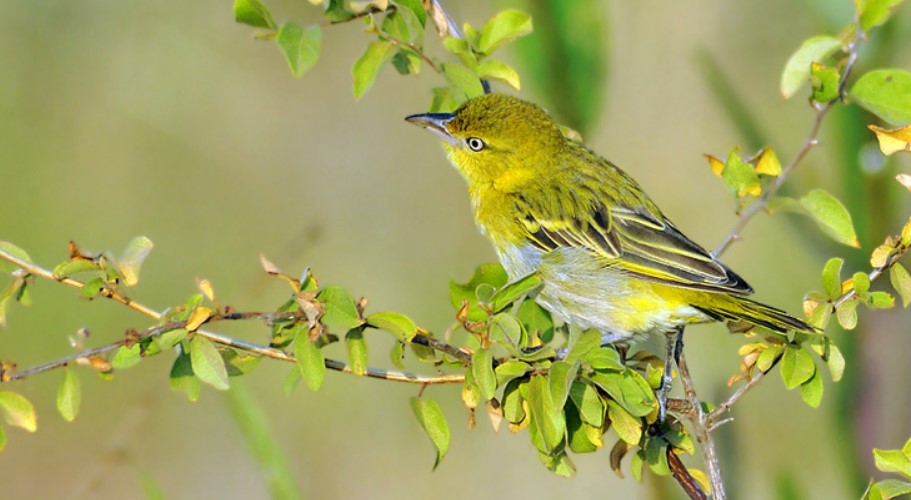
Day 10: Whole Day Birding Queen Elizabeth National Park
Today we immensely explore Queen Elizabeth National Park. Birds on this drive are numerous and may include among others the Wahlberg’s, Brown Snake, Short Toed Snake and Martial Eagle, Red-necked Spurfowl, Black-rumped and Common Buttonquails, African Crake, Hollub’s Golden and Lesser Masked Weavers, Black Coucal, Black-lored and Arrow Marked Babbler, Verreaux’s Eagle-Owl Copper, Scarlet Chested and Red-chested, Broad Tailed and African Moustached Warbler. In the afternoon we do a boat ride along the Kazinga Channel looking out for water birds that roost in between the Edward and George lakes. Close encounters with the biggest schools of Hippos in Africa and some crocs many migrating species like the Gulls and Terns, African Skimmers, Spoonbill, Sandpipers, Plovers are here, after this ride we Dinner and overnight at Marafiki Safari Lodge
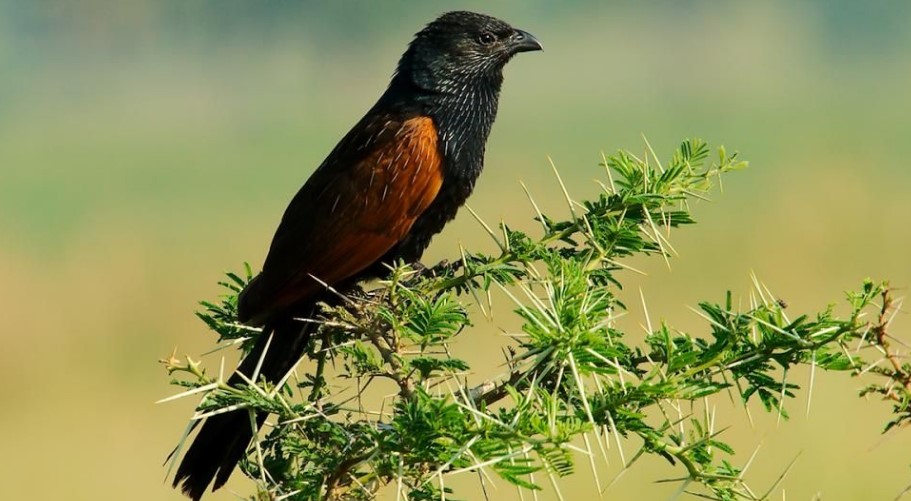
Day 11: Queen Elizabeth To Bwindi Impenetrable National Park
Have breakfast then transfer to Bwindi Impenetrable forest birding en route. Today we have a chance to go through the Ishasha sector which provides chances of viewing the tree climbing lions and other game, lookout for grassland birds including the Grassland and Plain-backed Pipits Flappet and Rufous Napped Larks, African Cuckoo Hawk, Black Cuckoo, White Winged Tit, Ovambo Sparrow Hawk, Black Coucal, Blue-napped Mousebird and many more, we continue to Ruhija where we have Africa’s no.1 birding spot according to the African Birding Club, birding through the “Neck” will spice this journey as you stretch out in the jungle after a long drive through the southern Savannahs of Queen Elizabeth National Park with Key bird species like the Mountain Wagtail, Chin-spot Batis, Black-billed Turaco, Fine-banded Woodpecker, Dwarf Honeyguide, Red-tailed Greenbul, and we should come across Bee-eaters including Black Bee-eater and Cinnamon-chested Bee-eater, Bronze-naped Pigeon, Many-coloured Bush-shrike, Ayres’s Hawk-eagle, Narina Trogon, Honeyguide Greenbul, Red-throated Alethe, Grey Apalis, African Shrike-flycatcher and Red-headed Malimbe; and in areas of dry fern vegetation, we expect to find the Dusky Twinspot, Mackinnon’s Fiscal, Yellow-bellied Waxbill, Black Saw-wing, Chubbs’ Cisticola. Other birds here include further higher lookout for Augur Buzzard, Petit’s Cuckoo Shrike, Pink-footed and Northern Puffback, Red-tailed, Little Grey Greenbuls, Chestnut-throated Apalis, East Yellow White-eye, Dark-capped Bulbul, Yellow-rumped, Speckled and Yellow-throated Tinkerbird, African Stonechat, Grey Cuckoo Shrike, Stripe-breasted Tit, Mountain-masked Apalis, Red-faced Woodland, Mountain Yellow Warbler, Regal Sunbird, Northern Double-collared Sunbird, Rwenzori Hill Babbler, White-tailed Blue Flycatcher, Yellow-whiskered Greenbul, Yellow-throated Leaf Love list endless. We stay at Trekker’s Tavern.

Days 12 And 13: Gorilla Tracking And Birding Safari In Bwindi Impenetrable National Park
If tracking we shall have early breakfast then assemble at the park headquarters for briefing about this breath taking gorilla trekking activity. Time spent tracking depends on where the gorillas spent the night, mood of the silverback and their feeding range or encounter with other groups which might be wild forcing them to move long distances so be prepared for a whole day activity. Once found you spend an hour with them, seeing these gentle giants interact is awesome and the awe-inspiring wildlife encounter on the African continent and an unforgettable. Birding Ruhija start after breakfast and go out birding in search for the Black-billed Turaco, Western-green Tinkerbird, Cardinal, Olive, Elliot’s and Fine-banded Woodpecker, African Green-Broadbill is the among the key bird species to look out for in this section of Bwindi Impenetrable Forest National Park, Mountain, Yellow whiskered and Yellow-streaked Greenbul, African Hill Babbler, Mountain Illadopsis, Grey Cuckoo Shrike Yellow-eyed Black Flycatcher, Red-faced Woodland Warbler, Grauer’s Warbler, Mountain Yellow Warbler, Chestnut-throated Apalis, Collared Apalis, Stripe-breasted Tit, Rwenzori Batis, Montane Sooty Boubou, Purple-breasted Sunbird, Blue-headed Sunbird, Regal Sunbird. Back to the lodge for dinner and overnight stay. Before dinner we always drive out to specific secret spots for the Rwenzori Nightjar one of those Endemic to the Albertine Rift Valley and hardly missed once in company of the expert Journeys Uganda birding safari guides.

Day 14: Birding From Bwindi To Lake Mburo National Park
Today birding will be done enroute and we shall stop at different interesting spots, as we exit the forest the cultivated areas are good for the Dusky Twinspot, Yellow-bellied, Kandt’s and Black-crowned Waxbill, Yellow-crowned Canary, White-eyed Slaty Flycatcher, Streaked Seed-eater, Yellow Bishop, Green-headed Sunbird, White-necked Raven, Mountain and Augur Buzzard, African-golden Breasted Bunting as we ascend further there are always pairs, family groups and big flocks of the Grey Crowned Crane the national bird of Uganda with great melodies of the Highland Rush Warbler. The dotted papyrus swamps are good its rarities like the Papyrus Gonolek, White-winged Scrub Warbler, Papyrus Canary, Greater-swamp Warbler, Carruther’s Cisticola among other, we continue to Lake Mburo National Park which has a record of more than 310 bird species in Lake Mburo National Park, it makes the park the best place in Uganda for savannah woodland and acacia dwelling bird species not completely leaving out the Forest species in the nearby Rubanga Forest. The extensive swamps make birding very enjoyable with about 8 papyrus specials including the spectacular localised and shy Papyrus Gonolek, White-winged Warbler, records of the Papyrus Canary, the blue-headed Coucal among others. Lake National Park is also a convergence area for the Southern species at the northern limit of their range include the Black-collared, Crested and Red-faced Barbet, Tabora Cisticola, Coqui Francolin, Bare-faced go-away Bird among others and not only birds but While in Lake Mburo we shall look out for mammals like the Zebra, Eland, Topi, Impala, Cape Buffalo, Giraffe Warthog etc, today we target the boat ride along lake Mburo where we hardly miss the African Finfoot, White Backed and Black Crowned Night Heron, Giant Kingfisher. A night drive always produces good views of the Black Shouldered, northern Tanzania Fiery Necked Nightjar, nocturnal mammals and Bush Babies. We stay at Rwakobo Rock.

Day 15: Birding Lake Mburo To Entebbe
After breakfast we start early in search for special savannah birds like the Yellow-bellied Apalis, Green Capped Eremomela, Buff Bellied Warbler, White Winged Tit, Red-billed Wood Hoopoe, the special birds for today’s drive will be the Tabora Cisticola, Crested Barbet, Black Collared and Red Faced Barbet the Coqui Francolin, Thick-billed Cuckoo are among the special bird species of Lake Mburo National Park. Brubru, Sulphur-breasted Bush-shrike, Red Headed Weaver, Green-backed, Bearded, Nubian and Uganda Spotted Woodpecker, African Black Headed Oriole, Black-faced Waxbill, Sulphur-breasted Bush-shrike, later we drive out of Lake Mburo National Park, as you exit there are chances of Brown-chested Plovers, Green-winged Pytilia, Slaty-coloured Sooty Boubou, to Kampala for dinner and overnight at Papyrus Guest House or Equivalent

Day 16: Birding Kampala- Mabamba Islands
Early transfer to Mabamba Swamp, 50 kms west of Kampala. Look out for many different birds on our way to the swamp like the Papyrus Gonolek, White Shouldered Tit, Red Cap, Western Banded Snake Eagle, White Winged Warbler, White Spotted Fluftail and Weyn’s Weaver. This Swamp is one of the best places to spot the exceptional Shoebill Stork. But also many other species can be found here, like the Allen’s and Purple Gallinule, Grey herons, African and Lesser Jacana, Rufous Bellied Heron, Squaco, Purple and Goliath Heron, the Globally threatened Pallid Harrier and Blue Swallow are migrant species, a variety of egrets, Yellow-billed and White-backed ducks, the Spur-winged and African Pygmy Goose etc. The best way to enjoy the rich bird life is by canoe and you might even have the luck to encounter the elusive Sitatunga Antelope, adapted to swampy habitats. Later in the afternoon drive to Jinja Sunset Hotel birding enroute for dinner and o/n stay.

Day 17: Mabira Birding – Departure
After breakfast we start early and drive to Mabira Forest, start by looking out for the Red Caped and Blue-shouldered Robin-chat, Weyn’s Weaver, Olive Green Cameroptera, Tit Hylia, African Pied Hornbill, Grey and Yellow Long Bill, Forest Wood-Hoopoe, Blue-breasted, White-bellied, Dwarf and Shining-blue Kingfishers, Sooty Flycatcher, Yellow-throated, Yellow Rumped and Speckled Tinkerbird, Yellow Crested, Brown-eared and Buff-spotted Woodpecker, Toro Olive Greenbul and Green-tailed Bristlebill, Fire-crested Alethe, Forest Robin after this beautiful show we transfer to the airport for your late flight back home, end of our Birding and Wildlife Safari to Uganda.




